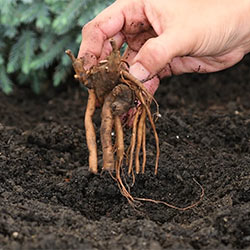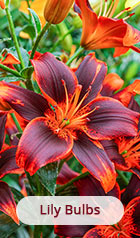- New
- Sun Plants Close X
Enjoy big, beautiful blooms year after year.
- Shade Plants
Close X
Bright colors, perfect for shady areas.
- Flower Bulbs
Close X
Easy to grow, easy to love.
- Roses
Close X
Adding classic roses is easier than you think!
- Trees & Shrubs
Close X
A fabulous focal point for any garden.
- Vines
- Bargain Bags
- Garden Aids
- Gardening Resource
-
What to do When Your Plants Arrive

Potted plants may be kept for a short time outdoors in a sheltered, but bright location. If cold temperatures are forecast, protect your plants from freezing.
Close XHow-to gardening tips from our experts.
- New
- Sun Plants Close X
Enjoy big, beautiful blooms year after year.
- Shade Plants
Close X
Bright colors, perfect for shady areas.
- Flower Bulbs
Close X
Easy to grow, easy to love.
- Roses
Close X
Adding classic roses is easier than you think!
- Trees & Shrubs
Close X
A fabulous focal point for any garden.
- Vines
- Bargain Bags
- Garden Aids
- Gardening Resource
-
What to do When Your Plants Arrive

Potted plants may be kept for a short time outdoors in a sheltered, but bright location. If cold temperatures are forecast, protect your plants from freezing.
Close XHow-to gardening tips from our experts.




















